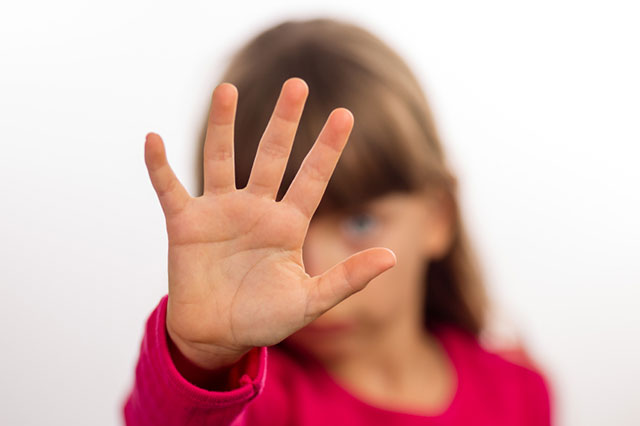In today’s digital age, cyberbullying on social media platforms has become a pressing concern. This content presents ten compelling reasons why it is crucial to monitor the social media activities of individuals who have been targeted by cyberbullies.
By actively observing and overseeing their online interactions, we can take proactive steps to ensure their safety, well-being, and mental health. Gain insights into the importance of monitoring and protecting cyberbullying victims on social media through this informative and empowering article.
It should come as no surprise that cyberbullying victims in the digital world are becoming an ever-growing issue. With almost unfiltered access to the internet and social media, our children are exposed to an increasingly long list of problems that range from belittling to harassment and even stalking.
Whether it’s on Facebook, in a video game or even in private chats between friends and strangers, there’s a whole world of potential safety concerns that parents should be worried about.
Thankfully, there are measures in place to help mitigate cyberbullying. For instance, users are free to block users from messaging them and they can even report suspicious or inflammatory behavior to support services in an attempt to have cyberbullies banned from the service.
Unfortunately, few kids know of these methods and it’s important to help guide them through the internet and teach them how to avoid cyberbullies. That’s why it’s important to monitor your child’s social media so you can get an idea of what’s happening. While you won’t always catch every instance of cyberbullying, it does help to keep an eye on their interactions to try and gauge what’s happening.
In this article, we’re going to talk about 10 different reasons why you should monitor a cyberbullied victim’s social media.
1. You Can See The Type Of People They’re Interacting With

It’s vital that you monitor a cyberbullied victim’s social media so that you can see the type of people they’re interacting with. This will help you understand the type of people that are doing the cyberbullying and help your child either stay away from them or explain why it’s not worth their time to listen to them.
2. You Can See The Responses And Messages Of The People They’re Speaking With

A lot of social media is public and will help you understand and see the types of conversations going around. You can see who is doing the bullying, how it initiates and also what kind of effect it could be causing on your child.
3. You Can See Who Is Bullying Or Being Aggressive To Your Child

If the social media accounts are directly linked to people at your child’s school then it’s possible to let authorities or teachers know about it. Once you’ve made the link between someone and their social media, it’s possible to take action against cyberbullying.
4. You Can Report Those Who Are Engaging In Bullying Or Poor Behaviour On The Internet

If you’re monitoring a cyberbullied victim’s social media then you can report those who are engaging in poor behaviour. Every social media platform has block and report functionality that can be used to both shield your child and ban those that are acting aggressively.
Below is the link to the best-reviewed monitoring service that we found and recommend as an affiliate. The service has been approved by PCmag.com, Softronic.com and Softpedia.com. Click on the graphic to review the features and benefits.
5. You Get A Better Understanding Of What’s Going On Over The Internet

Although many social media platforms do have regulators that ban and remove content that they deem inappropriate, social media can still be a place to discuss things like world events, interests and hobbies.
By monitoring the victim’s social media, you can get a better understanding of the types of interests they have and who the bullies are, why they react so negatively and also how it could be prevented in the future.
6. You Can Discover If Your Child Is Going Through A Rough Time

If your child spends a lot of time on the internet then following their social media can help you understand what they’re going through.
Whether it’s trouble at school that they voice online or if they’re trying to cope with life struggles, you’ll get a better idea of what your child is facing.
7. You’ll Find Out Why Your Child Is Having Trouble In Their Daily Life

A lot of people use social media as an emotional outlet and if you’re following your child’s social media, you could potentially discover more about your child that they tend to keep hidden.
Children do have a hard time expressing their feelings and with a platform such as social media where they can receive help, praise and encouragement from friends and strangers, it’s common to see how they really feel through social media posts and discussions.
8. You’ll Find Out Who Can And Cannot Be Trusted On The Internet

If you’ve followed the social media accounts for long enough then you’ll start to see who can and cannot be trusted around your child.
Many people are unfiltered on the internet, meaning they’re more likely to speak their minds and engage in conversations or discussions that they might avoid in person.
By examining social media accounts and following a cyberbullied victim’s interactions, you’ll quickly discover who should and should not be trusted on the internet.
9. You Can Help Set Examples And Explain How To React

Children may find it difficult to react to certain situations on the internet especially if it comes to cyberbullying.
Depending on their influences, they might react in an equally aggressive way which causes them to become more hateful and frustrated against bullies over the internet.
By monitoring their social media and talking to them about it, you become their role model and you can teach them how to react to cyberbullying.
Whether it’s teaching them to ignore the bullies or using the blocking and ignoring functions, there are plenty of ways to teach a child how to react.
10. You Can Help Your Child Avoid Getting Into Trouble

Lastly, inflammatory comments can get people into trouble. If your child does decide to fight back and throw their own insults and words out, they could get into trouble with the platform especially if others decide to report the responses.
By monitoring a cyberbullied victim’s social media, you can step in and intervene to help prevent your child from getting into further trouble.
It’s also possible that social media would be used for arranging meetings in real life or groups in school, so by monitoring the social media accounts, you can keep track of what’s going on in your child’s life and prevent them from getting into trouble.
If you need to read more on this subject and are worried about your child’s safety Deborah Serani has written the article Bullycide for www.PsychologyToday.com and it can be read here.
Preventing Cyberbullying on Social Media
Preventing cyberbullying requires a multi-faceted approach involving various stakeholders. Here are some strategies:
Education and awareness: Promote digital literacy and teach children about responsible online behavior, empathy, and the consequences of cyberbullying.
Open communication: Encourage open dialogue with children about their online activities and provide a safe space for them to discuss any issues they encounter.
Privacy settings and reporting mechanisms: Teach children how to use privacy settings on social media platforms and report instances of cyberbullying to appropriate authorities.
Encourage bystander intervention: Encourage individuals to speak up and support victims when witnessing instances of cyberbullying, fostering a culture of empathy and solidarity.
Parental involvement: Monitor your child’s online activities and establish rules and guidelines regarding social media usage.
FAQ- Cyberbullying on Social Media
1: What is cyberbullying on social media?
A: Cyberbullying on social media refers to the act of using digital platforms, such as social networking sites, to harass, intimidate, or humiliate individuals. It involves using technology to target and harm others through mean-spirited messages, threats, spreading rumors, sharing embarrassing content, or engaging in online harassment.
2: How prevalent is cyberbullying on social media?
A: Cyberbullying on social media has become a widespread issue affecting many individuals, particularly children and teenagers. The anonymity and accessibility of social media platforms have made it easier for individuals to engage in cyberbullying behaviors. While specific statistics may vary, numerous studies indicate that a significant portion of young people have experienced cyberbullying in some form.
3: What are the effects of cyberbullying on social media?
A: Cyberbullying can have severe and long-lasting effects on the mental, emotional, and social well-being of the individuals targeted. Victims may experience anxiety, depression, low self-esteem, and a decline in academic performance. It can also lead to social isolation, strained relationships, and, in extreme cases, even suicidal thoughts or actions.
Conclusion
Cyberbullying on social media has become a prevalent issue in today’s digital world. This form of harassment can have severe consequences for the victims, impacting their mental health, self-esteem, and overall well-being. In order to effectively combat cyberbullying and provide support to those affected, it is essential to monitor the social media activities of the victims. By actively overseeing their online interactions, we can identify potential threats, provide timely intervention, and create a safer online environment.
The ten reasons outlined in this article highlight the importance of monitoring cyberbullied victims’ social media presence. Through monitoring, we can gain valuable insights into the extent and nature of the bullying, identify patterns and trends, and gather evidence for intervention if necessary.















